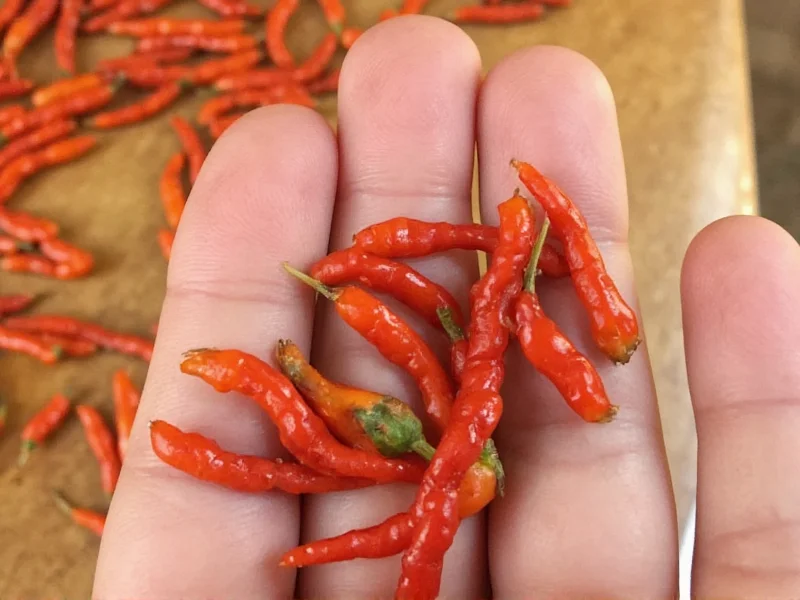Understanding how to measure Scoville units requires knowledge of both historical methods and modern scientific techniques. The Scoville scale remains the standard measurement for chili pepper heat, but the methodology has evolved significantly from its origins. Today's accurate measurement of pepper heat relies on laboratory analysis rather than human taste panels, providing consistent, objective results that food scientists, growers, and consumers can trust.
The Science Behind Capsaicin Measurement
Capsaicinoids are the chemical compounds that create the burning sensation associated with chili peppers. Among these, capsaicin and dihydrocapsaicin account for most of the heat. When learning how scoville units are measured scientifically, it's essential to understand that the concentration of these compounds directly determines a pepper's heat level. The human tongue can detect capsaicin at concentrations as low as 0.01 ppm (parts per million), while extremely hot peppers like the Carolina Reaper contain capsaicin concentrations exceeding 16 million SHU.
Historical Method: The Scoville Organoleptic Test
In 1912, pharmacist Wilbur Scoville developed the original method for measuring pepper heat, known as the Scoville Organoleptic Test. This subjective approach involved:
- Dissolving an exact weight of dried pepper in alcohol to extract capsaicinoids
- Diluting the extract in sugar water at increasing ratios
- Having a panel of five trained tasters sample the solutions
- Determining the point where the heat becomes undetectable
The Scoville rating equaled the dilution factor at which heat was no longer detectable. For example, if a solution diluted 5,000 times remained detectable but 6,000 times did not, the pepper rated 5,500 SHU. This method for measuring scoville units had significant limitations: human taste sensitivity varies, fatigue affects results, and the process lacked precision. Two labs testing the same pepper might report values differing by 50% or more.
Modern Scientific Measurement: High Performance Liquid Chromatography
Since the 1980s, the scientific community has used High Performance Liquid Chromatography (HPLC) to measure capsaicin concentration accurately. This objective method for measuring scoville units involves:
- Extracting capsaicinoids from the pepper sample using chemical solvents
- Injecting the extract into an HPLC system that separates compounds based on chemical properties
- Detecting and quantifying individual capsaicinoids using ultraviolet light absorption
- Calculating total capsaicinoid concentration in parts per million (ppm)
- Converting ppm to Scoville Heat Units using the formula: SHU = ppm of capsaicinoids × 15
This conversion factor (1 ppm = 15 SHU) maintains consistency with the original Scoville scale while providing objective measurements. When understanding how to read scoville heat unit ratings today, remember they're based on this standardized laboratory process rather than subjective tasting.
Comparing Measurement Methods
The table below illustrates key differences between historical and modern techniques for measuring scoville units:
| Measurement Aspect | Scoville Organoleptic Test | HPLC Method |
|---|---|---|
| Accuracy | Low (30-50% variation between tests) | High (consistent within 5%) |
| Subjectivity | High (depends on human tasters) | None (objective chemical analysis) |
| Time Required | Several hours per sample | 30-60 minutes per sample |
| Cost | Low (basic lab equipment) | High (specialized instrumentation) |
| Professional Requirement | Trained taste panel | Chemistry expertise |
Practical Implications of Modern Scoville Measurement
Understanding the difference between scoville organoleptic test and HPLC is crucial for interpreting heat ratings. While HPLC provides precise chemical measurements, the conversion to SHU maintains connection to the original scale that consumers recognize. Food manufacturers, researchers, and pepper enthusiasts rely on these standardized measurements when developing products or comparing varieties.
When examining how to interpret SHU ratings, consider that natural variation exists within pepper varieties. A single jalapeño might range from 2,500-8,000 SHU depending on growing conditions. The modern technique for measuring capsaicin concentration reveals this variability with precision impossible in the original taste-based system.
For culinary applications, understanding accurate measurement of pepper heat helps chefs and home cooks achieve consistent results. Commercial producers use HPLC data to ensure product consistency, while researchers studying capsaicin's medical applications require the precision of modern measurement techniques.
Common Misconceptions About Scoville Measurement
Several myths persist about measuring Scoville units. Many believe the Scoville scale directly measures 'heat' when it actually quantifies capsaicin concentration. Others think higher SHU always means a more intense experience, ignoring that different capsaicinoids affect heat perception differently. The conversion factor (1 ppm = 15 SHU) also confuses some, as it's a mathematical construct rather than a direct physiological measurement.
When exploring why scoville scale uses dilution method in historical context, remember that Scoville developed his test before modern chromatography existed. His innovative approach provided the first standardized measurement, even with its limitations. Today's understanding of converting HPLC results to scoville units maintains historical continuity while delivering scientific accuracy.











 浙公网安备
33010002000092号
浙公网安备
33010002000092号 浙B2-20120091-4
浙B2-20120091-4